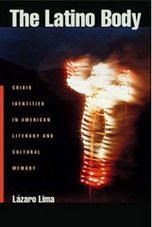Monday, October 15, 2007
Curricular Inclusion and the Latina/o Body Politic
I was reminded this past week about how important it is for many Latina/o students to see themselves reflected in the social mirror the academy both reflects and refracts. After a symposium on The Futures of Latina/o Studies at Bryn Mawr College, and the American Studies Association Conference here in Philly, I'm reminded about a lesson I learned from Walter Benjamin's "The Author as Producer" on how institutions can "assimilate astonishing quantities of revolutionary themes," and the various performances thereof, without calling into question "the existence of the class that owns it [...]." The ASA theme this year was "América Aquí: Transhemispheric Visions and Community Connections" and, I must say, the quality of some of the sessions I attended was superb, even as the program guide elided accent marks, and the topics themselves registered diversity in the stacatto rhythms of monolingualism. So what happens when the conditions under which inclusion is granted rests on the contingencies associated with proper form? My own students are grappling with this question as they untangle local and administrative histories of what Doris Sommer, in another context, called the democratic drive of "slaps and embraces." Larger academic institutions are providing, wittingly or not, the template from which to register Latina/o inclusion in the curriculum and into the communities the academy seeks to represent. The UNC-Chapel Hill Undergraduate Minor in Latina/o Studies provides one such template. Please send others as I compile my list for Mujeres along with related possibilities for course offerings.
Subscribe to:
Comments (Atom)

